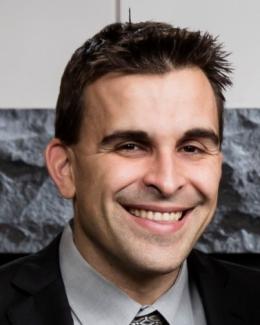The 25th annual National School on Neutron and X-ray Scattering was held August 6–18. Each year, graduate students visit Oak Ridge and Argonne National Laboratories to learn how to use neutrons and X-rays to study energy and materials. Credit: Genevieve Martin/ORNL, U.S. Dept. of Energy
In 2023, the National School on X-ray and Neutron Scattering, or NXS, marked its 25th year during its annual program, held August 6–18 at the Department of Energy’s Oak Ridge and Argonne National Laboratories.
It’s a hallmark year for NXS, which has trained so many scientists in the neutron scattering community in the United States and around the world.
The purpose of NXS is to educate graduate students in the use of major neutron and X-ray facilities. Lectures presented by researchers from academia, industry and national laboratories include basic tutorials on the principles of scattering theory and the characteristics of the sources. Students are given the opportunity to perform experiments on almost every instrument at the High Flux Isotope Reactor, or HFIR, and the Spallation Neutron Source, or SNS.
They also spend a week learning X-ray scattering techniques at Argonne’s Advanced Photon Source. Students understand how together the two experimental methods form a powerful combination for characterizing and understanding materials at their most fundamental levels.
“I spent three years of my life as an experimentalist studying the structure of water, how it responds to different solutes such as salt hydrates. Now I’m a computational chemist,” said NXS student Angela Shipman, a graduate student at North Carolina State University. “I’m hoping NXS will help me understand all the theory, all the extensive equations and models so I can simulate and understand something as fundamental as water for water purification.”
The DOE-sponsored program is highly competitive. Around 200 students apply each year, but only 60 are accepted. Occasionally some students return to the facilities after graduation to work in temporary or longer term positions. In fact, a significant number of U.S. researchers working in the neutron scattering community were NXS students at one time.
This year’s NXS involved almost 130 ORNL staff members. During their week at ORNL, the students attended 21 lectures and performed four experiments each. A total of 25 hands-on experiments were conducted and involved more than 75% of the HFIR and SNS instruments. And for the first time, this year ORNL introduced a data analysis session led by Malcolm Guthrie, Jean Bilheux and Andrei Savici.
NXS student Mario Gonzalez is a doctoral student at the University of British Columbia studying condensed matter physics with a special interest in high entropy oxides.
“These materials are chemically complex. That means distinguishing the elements can be a challenge. The way I expect NXS to help me going forward is to learn how to use X-rays to distinguish what the electrons in one specific item are doing, and we can use neutrons to probe how that relates to the magnetism. I expect to use this knowledge to develop better and more efficient materials for technologies of the future.”
This year’s organizers are ORNL’s Bianca Haberl, Mike Manley and Adam Aczel, and from Argonne, Stephan Rosenkranz, Jessica McChesney and Chengjun Sun. Distinguished lecturers included scientific experts from ORNL, the National Institute of Standards and Technology, Los Alamos National Laboratory and several universities in North America.“This year was a tremendous success, and we had such a great class,” Haberl said. “The school is an amazing opportunity for the students to interact with experts, to get their hands on the instruments and learn about the large variety of techniques available to them in their own research. It’s also a great opportunity for us to meet and engage with them — the future generation of neutron scatterers. So, it’s really an important event for all of us.”
For more information about NXS and access to archived lectures and videos, click here to visit the NXS website.
HFIR, SNS and APS are Office of Science user facilities.
UT-Battelle manages ORNL for the Department of Energy’s Office of Science, the single largest supporter of basic research in the physical sciences in the United States. The Office of Science is working to address some of the most pressing challenges of our time. For more information, please visit energy.gov/science.








